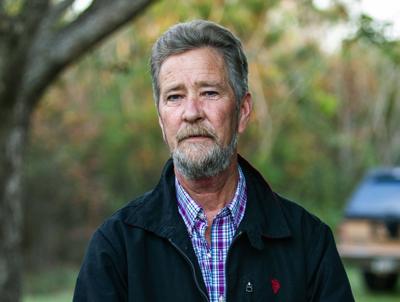Advertisement

WASHINGTON — The Trump administration on Thursday unveiled a long-awaited plan to end federal control of two mortgage giants that were bailed out by taxpayers during the 2008 financial crisis and return them to the private sector.
The administration’s 49 recommendations to overhaul America’s housing finance system are unlikely to find an eager audience in Congress, which has been deeply divided on the issue and is now consumed with other fights in the run-up to the 2020 elections.
But the proposal could accelerate the administration’s attempts to privatize the mortgage giants, Fannie Mae and Freddie Mac, which collectively backstop a little less than half of the nation’s $11 trillion mortgage market.
The plan — released by the Treasury and Housing and Urban Development Department — was ordered up by President Trump in the spring, more than a decade after the government took over the mortgage giants at the height of the financial crisis. It includes recommendations meant to limit the federal government’s role in the mortgage market and inject more private competition into it. Officials say it would promote affordable housing and protect taxpayers from bailing out Fannie and Freddie in the event of another housing crash.
But releasing Fannie Mae and Freddie Mac from their federal embrace has proved politically difficult, because the entities effectively subsidize the 30-year fixed-rate mortgages that are most popular among American home buyers. Affordable housing advocates have warned that returning the firms to the private market could threaten those mortgages or make them more expensive and more difficult to obtain for low-income home buyers.
“The administration says it is trying to save taxpayers from the risk of another future catastrophic meltdown, but it is essentially turning the system over to Wall Street,” said Nikitra Bailey, executive vice president of the Center for Responsible Lending.
In a nod to those concerns, administration officials insisted in a Thursday briefing with reporters that their plans would create more competition in housing finance and would reduce costs for borrowers, not raise them.
While officials said the 30-year mortgage would be protected, the report suggested that such long-term mortgages could remain widely available without government support, or that “the United States could perhaps follow the lead of other countries” and shift toward other types of mortgages, like ones with variable rates.
The report went on to say that “stability in the housing finance system is crucial, and generally counsels in favor of preserving what works in the current system, including the longstanding support of the 30-year fixed-rate mortgage loan.”
Despite talk of privatized mortgage markets, the report said the government should provide a full, taxpayer-backed guarantee of mortgage-backed securities — and called on Congress to create one.
Critics say such a move would allow investors to take risks in the mortgage market and reap rewards, but leave taxpayers on the hook in the event of another housing crash. Such a scenario is what helped fell Fannie Mae and Freddie Mac in 2008.
How the plan’s goals would be met remain vague — for example, the proposal offered options for Fannie Mae and Freddie Mac to raise the capital they would need to go private, such as engaging in a stock offering, but it did not specify which options the administration prefers. Many are recommendations for congressional action that are unlikely to be enacted anytime soon.
Several are likely to draw condemnation from housing advocacy groups. Those include overhauling federal affordable housing requirements and setting new restrictions that appear to be meant to discourage the companies from investing as heavily in mortgages for apartment buildings in areas, such as New York, that have adopted rent-control laws, which the administration says impede housing development.
Administration officials say it is long past time to rebuild Fannie and Freddie’s capital reserves and release them from federal conservatorship, reducing the risk that taxpayers would be forced to bail out the mortgage market if another housing crisis led to a wave of foreclosures. Privatization could bring a windfall for hedge funds and other investors that bought Fannie Mae and Freddie Mac stock after the crisis for pennies, then pushed the administration to hasten the process.
“The housing finance system is in serious need of reform,” the report declared, noting that after 10 years in government conservatorship, Fannie Mae and Freddie Mac “continue to be the dominant participants in the housing finance system. Although they remain critical to the functioning of that system, they are not yet subject to capital and other regulatory requirements tailored to the risks they pose to financial stability. This lack of reform has left taxpayers exposed to future bailouts.”
Recommendations that require congressional action could disappoint some investors, who had hoped the Trump administration would move quickly to boost the companies’ financial cushion, then quickly sell the government’s stakes in them. Treasury Secretary Steven Mnuchin, who has long advocated removing Fannie Mae and Freddie Mac from government control, has also said that he believes that they should be restructured in the context of broader housing finance legislation.
The proposal kicks other key decisions to the Federal Housing Finance Agency, an independent regulator headed by a longtime champion of free-market competition in home lending, Mark Calabria.
Mr. Calabria has said repeatedly that he has the authority to start the process of returning Fannie Mae and Freddie Mac to private hands without Congress. In a recent interview, he said he expected to take steps this fall to allow the firms to begin building cash reserves by Jan. 1.
Currently, the entities are required to send all profits to Treasury, above a certain capital limit. Mr. Calabria said he expected that practice to end shortly, though the report did not explicitly call for that. He also said the process of returning Fannie Mae and Freddie Mac to private hands, including raising money from a possible stock offering, could take years.
“There’s a lot of things you need to exit,” he said. “You can’t just do those things over a weekend.”
Any proposal by the Trump administration to make major changes to housing finance laws will likely be met with deep skepticism from groups that have been critical of its effort to scale back government regulations meant to reduce racial, ethnic and income segregation in federally subsidized housing and development projects.
Ms. Bailey of the Center for Responsible Lending said that she feared the Trump administration’s plan would drive up the cost of mortgages for all borrowers. She said this would be particularly painful for rural residents, low- and moderate-income families and communities of color that are already struggling to find affordable housing.
Ms. Bailey said that higher mortgage costs could disrupt the housing market and the broader economy and that the administration should not forget the lessons of the financial crisis.


